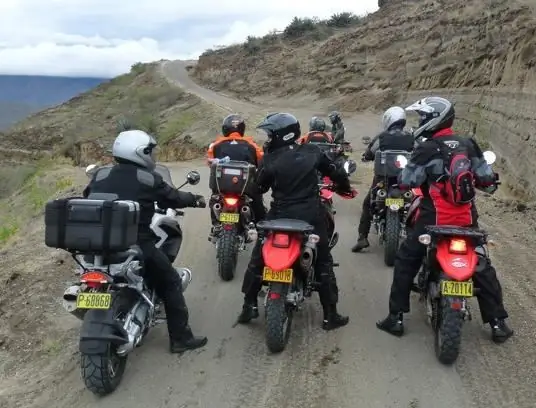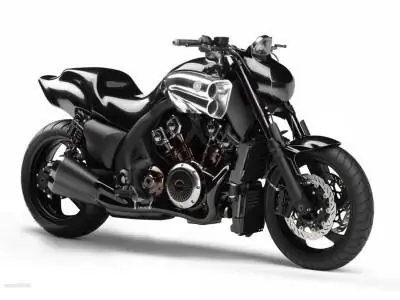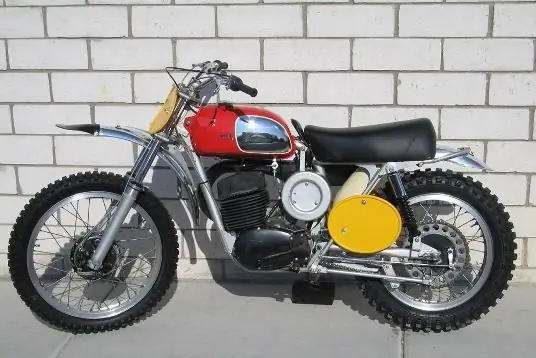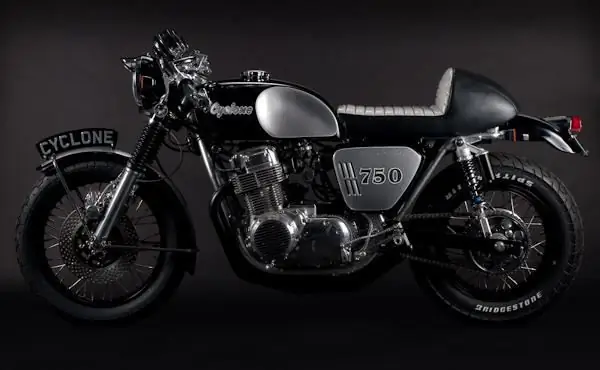2026 Author: Erin Ralphs | [email protected]. Last modified: 2025-01-22 21:14:17
Motorcycle M-72 of the Soviet period was produced in large quantities, from 1940 to 1960, at several factories. It was made in Kyiv (KMZ), Leningrad, the Krasny Oktyabr plant, in the city of Gorky (GMZ), in Irbit (IMZ), at the Moscow Motorcycle Plant (MMZ). Initially, the M-72 heavy motorcycle was produced exclusively for deliveries to the armed forces. The car was equipped with a light machine gun, which was mounted on the front of the sidecar. The motorcycle did not enter the civilian sector of trade, and if any person appeared "on horseback" on the M-72, he was stopped, and the car was taken away without explanation.

Military purpose
The M-72 motorcycle was classified using the term "armored" although it was not armored. It was supplied to motorized rifle army units and was the basic infantry vehicle for combat on flat terrain. The motorcycle was not decisive in the battles of World War II, as it was not protected from enemy shells and bullets. It was enough for a small fragment of a mine to get into the engine, and it stopped, the soldiersleft without cover and died. It was possible to use the M-72 effectively only in the event of a lightning attack, in a situation of surprise, when the enemy was confused and could not resist.
Begin production
The prototype of the M-72 was the German motorcycle BMW R71, the most common model in the structures of the Wehrmacht. Five of these motorcycles were secretly purchased in Sweden, transported to Moscow, dismantled and examined. In March 1941, the production of the Russian version began at the Moscow Motorcycle Plant. The Soviet motorcycle turned out to be no worse than its German counterpart, although cars did not come off the assembly line regularly. The main components and assemblies of the motorcycle were produced at different factories: the engine was made at the Stalin Automobile Plant, the gearbox was made at AZLK (Lenin Komsomol Plant), the sidecar and cardan shaft were made at GAZ in the city of Gorky. Thus, at first, the planned production of the M-72 motorcycle was difficult due to the lack of coordination among suppliers.

Post-war
During the war, the M-72 motorcycle was produced at factories located in the Siberian evacuation zone. It was then that the name "Ural" was added to the index. When the war ended, there was an export boom in the USSR, the government tried to get as much money as possible by selling goods abroad. M-72, a Soviet motorcycle, was exported in large quantities to foreign countries in the 50s. M-72 "Ural" willingly bought in Europe. Simple design and reliability were the main arguments in favor ofmodels.
Since 1955, the Ural M-72 motorcycle has been sold to the population within the country. The civilian version was distinguished by improved engine performance, a powerful frame, and a torsion transmission of engine rotation to the sidecar wheel. The gas tank was decorated with the inscription "Irbit". Nominally, three-wheeled vehicles were considered to belong to their owners, but only in peacetime. In the event of war, each Ural M-72 motorcycle could be requisitioned and sent to the front.
Specifications
The M-72 design fit well into the conveyor assembly process, and this made it possible to produce a significant number of machines in a relatively short period of time. The production of motorcycles was held back by the desire of designers to improve the technical parameters of individual mechanisms. The German motorcycle BMW R21 contained a number of technical innovations that were not included in the technological process that was used in the assembly of the Soviet version. Therefore, the engineers wanted to catch up and put into production all the useful achievements of German specialists.

Next in line were constructive developments: a duplex frame, double gear shifting - foot and lever (at the choice of a motorcyclist), spring shock absorbers of the rear suspension, a telescopic front fork. Instead of a chain drive, characteristic of Soviet motorcycles, a cardan was installed. Separate power supply of the cylinders was practiced, in this case two carburetors were installed on the motorcycle.
Designengine
Opposite cylinder arrangement provided good balance of the motor in combination with a low center of gravity, which was located at a height of 592 mm. Auxiliary working units - a generator, an oil pump, a distributor - rotated using gear drives. Cast iron cylinders were coated with a special black lacquer with heat-resistant characteristics. The main journals of the crankshaft worked on needle bearings. The connecting rods were separated and each sat on its own crankshaft neck. This assumed a horizontal axial displacement of the cylinders in the value of 39.2 mm relative to each other. The two-bearing crankshaft made it possible to reduce the length of the engine crankcase by thinning (up to 18 mm) the cheeks between the main and connecting rod journals.

Military supplies
The civilian version of the M-72 motorcycle was still equipped with cells for ammunition and spare parts, as well as a swivel device for a Degtyarev light machine gun. At the same time, the new owner did not have the right to dismantle the army brackets. M-72 - a motorcycle, the photo of which is posted on the page - is a prime example of the Soviet era.
Improvements
Starting from 1956, the Irbit Motor Plant switched to the M-72M model, which differed from the previous one in some improvements. The brake drums were reinforced with special stamped discs that improve the fastening of the spokes, they were distinguished by the optimal location of the rear wing for more effective cleaning of sticky dirt. The front wing was raised and fixed on a fixed partfront fork. The stroller has changed its configuration.

Sport modification
The production of the M-72M did not last long, "IMZ" soon switched to the production of the M-61 model. In addition to standard motorcycles, a sports modification of the M-72K, a lightweight design, with a 30 hp engine, was developed at the Irbit plant. with., equipped with a device for changing the valve timing.
M-72K, designed for cross-country competitions, was equipped with a special air duct that took air masses from the top panel of the gas tank. The wheels of the motorcycle were "shoeed" in tires with a deep tread pattern. The headlight has been eliminated and the overall weight has been reduced with a lighter side trailer.
Motorcycle M-72, spare parts
In the Soviet Union, thanks to the planned economy, the production of spare parts was raised to the highest possible level. It was believed that the technical tool should be guaranteed to be provided with repair accessories. Therefore, commodity stocks were created, which for years gathered dust in warehouses. Like all motorcycles of the Soviet period, the M-72 was provided with spare parts for decades to come. There is currently no shortage of WWII heavy motorcycle repair kits.

Motorcycle M-72, price
Currently, there are a lot of offers on the used vehicle market. The M-72 Ural is no exception. There are even rare specimens - retro motorcycles produced in 1957. The cost directly depends on their status - if it's just a rusted three-wheeled car, it can cost 10 thousand rubles. But if the motorcycle has undergone technical resuscitation, restored according to the appropriate technologies, has an impeccable presentation, then this amount can increase to 399 thousand rubles, since this is no longer a motorcycle, but an exclusive retro.
Recommended:
Touring motorcycles. Characteristics of motorcycles. The best touring bikes

Two-wheeled transport allows you to make long journeys. Modern touring motorcycles make it possible to do this easily and comfortably. Now a new type of tourism is emerging and developing - motorcycle travel
Motorcycle: types. Classic and sports motorcycles. Motorcycles of the world

Sport bikes differ from their classic counterparts in lightness and high speed. As a rule, all sportbikes are racing. By classic, they mean a regular motorcycle that serves for short and long trips
Motorcycles 250cc. Motocross motorcycles: prices. Japanese motorcycles 250cc

250cc motorcycles are the most popular models in the road class. Various modifications of the brands "IZH", "Kovrovets", "Minsk" can still be found today both on the highway and on city streets
The best classic motorcycles. Road classic motorcycles

An article about classic road bikes, manufacturers, etc. The article provides buying advice and talks about the permanence of the classics
Soviet motorcycles. Motorcycles of the USSR (photo)

The history of the domestic motorcycle industry is an integral and bright part of the global production of bikes. Izhevsk, Kyiv, Minsk and Kovrov factories can boast both famous victories and bitter defeats. Ultimately, the entire production of Soviet "iron horses" ended in complete oblivion

